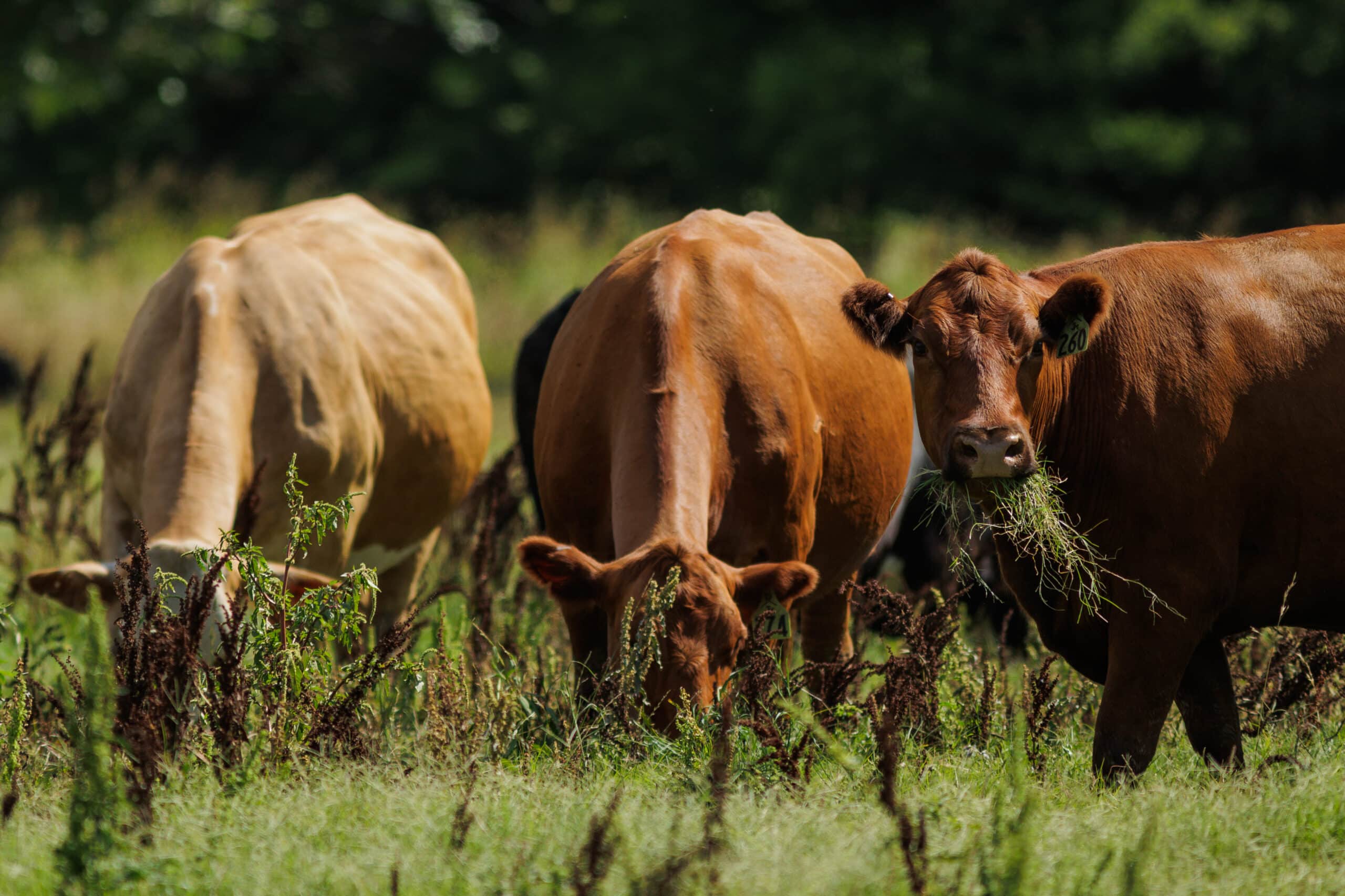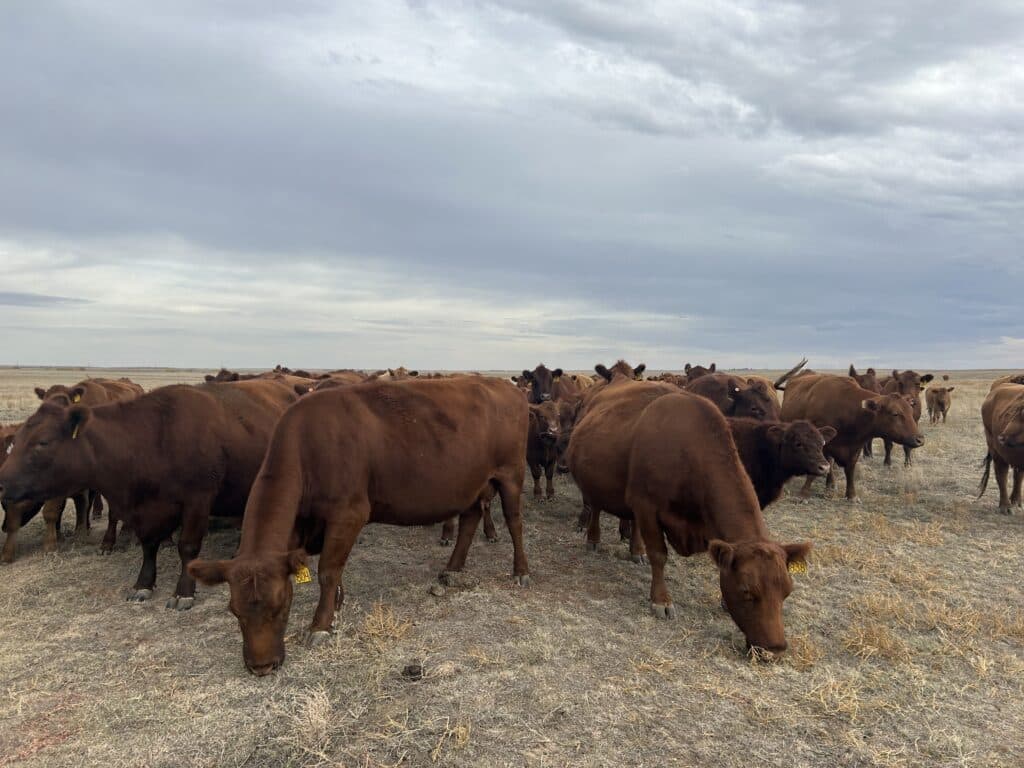Is the Answer Younger Slaughter Age for Beef?

With the UK government aiming for an ambitious net zero target, there is more pressure than ever for farmers to reduce their environmental impact. One suggested solution has been to lower the age of slaughter for livestock, therefore reducing their effect on the environment over their lifetime.
The current age of slaughter depends on the animal’s breed, sex, finishing system and buyer requirements, such as abattoir specifications. For beef cattle the average age of slaughter in the UK is 22-23 months. In the UK there was a ban on cattle older than 30 months as a safeguard for BSE, which was brought into effect in 1996 but has since been relaxed. Now, the government are looking to reduce the age of cattle once more.
What are the Impacts?
Environmental
The National Beef Association (NBA) has suggested cutting slaughter ages down from a maximum of 30 months to 27 months and adding a carbon tax for older cattle. Monies from this tax could fund the ELMS scheme to help new farmers.
They argue that this would reduce carbon emissions by 87,665 tonnes per year, by removing 260,000 cattle off the planet 3 months earlier. An 11-month-old beef animal produces 4.2 kg of carbon each day which more than doubles to 9.5 kg/day by the time they reach 31 months. Removing older cattle earlier makes way for younger animals, increasing the UK’s suckler herd and reducing its reliance on imports. This gives us more beef without raising the carbon footprint. The UK would be more self-sufficient, import less beef, reduce transportation and ultimately decrease carbon emissions.
But it’s not that simple.
In fact, some farmers believe that growing the cattle more intensively could have a bigger environmental impact. Imported soya and higher concentrate feeds could be required to get the animals to slaughter weight earlier. These have a greater impact on the environment than grass which locks carbon away. Also, cattle can utilise poor quality grass which won’t accelerate their growth but will act as a carbon sink on the farm.
Former Pasture for Life board member, Dave Stanley, said that 100% grass-fed beef is the way forward. With proper grassland management, beef farmers improve their profitability, produce more nutritious food, improve biodiversity and animal welfare, and help sequester carbon.
Practicalities of Lowering Slaughter Age
Case Study
David Barton finishes his beef cattle at 20 months. He has reduced slaughter age by 5 months by making practical changes to his 103ha farm in Gloucestershire. He has significantly reduced his farm’s carbon footprint and taps into the Countryside Stewardship scheme for financial payments.
Breeding
-
- Heifers are calved at 2 years old;
-
- Cows have 3 cycles to get in calf, otherwise they leave the operation;
-
- Cows graze pasture but receive urea-treated barley in the last month of pregnancy to improve colostrum quality.
Calf rearing
-
- Salers are his breed of choice for their easy calving;
-
- Calving starts March 1st, weaning complete by mid-November;
-
- Calves are suckling within 2 hours;
-
- Colostrum is high quality, achieved through diet and breed;
-
- Calves are weaned onto silage and urea-treated barley, then reared on grass;
-
- Calves reach 41% cow weight at weaning.
Management
-
- Weighing cattle is regular – cows and calves at weaning and calves every 6 weeks. It means he can correct issues before a 20-month target;
-
- Utilisation of rotational grazing, silage cut earlier (and 5 or 6 times) for greater nutrition;
-
- The grassland is species-rich with legumes to reduce nitrogen fertiliser use and improve productivity.
Financial
The slaughter of veal animals is typically between 10 and 12 months. The NBA are suggesting reclassifying beef and labelling cattle slaughtered at that age as prime beef rather than veal. This will push veal producers out of business but will mean other beef producers can send cattle for slaughter without picking up a financial penalty.
Some, however, believe that with more intensively farmed beef in the UK, the price of beef will drop as supply outgrows demand.
But some have found the financial benefit.
Case Study
Livestock farmer, David Girvan who farms cattle and sheep in the Scottish Highlands, has increased his farm savings by selling his livestock earlier. Reducing the time the animals spend on the farm reduces his farm’s carbon footprint and amount of feed required. He looked at improving his grazing quality and regime and using precision technology. From this, his lambs reached slaughter weight sooner and were sold younger, increasing his income by £8 per head of sheep. The resulting grass left was used for breeding ewes and getting them into peak condition for tupping.
Nutritional and Consumer Behaviour
Of course, there are the consumers to consider when making changes like this. Will people mind having younger animals on their dinner plates? Judging by the research into the tastiness of younger meat, they probably wouldn’t and marketing it as more environmentally friendly is another tick in the box.
A study using beef cattle native to Turkey found that the qualities of the meat in terms of tenderness, juiciness and flavour intensity all increased until 19 months of age, after which they declined. This is attributed to larger muscle fibres, intramuscular fat content, and the lower solubility of collagen.
When comparing the meat of cattle slaughtered at 6, 9 and 12 months of age, sensory evaluation, in particular tenderness and juiciness, scored most highly for 6-month-old cattle. Residual glycogen content increased in the older cattle, negatively affecting tenderness and juiciness. The beef was also significantly lighter in colour from younger cattle which is favoured by consumers.
Other Considerations
The possibility of reducing slaughter age in the UK may be of concern for some farmers who need to adhere to strict regulations such as those involved in the Scotch beef industry or those who have been awarded PGI status for their cattle. However, Scotch beef still falls within the new suggested age of slaughter. So the high quality required to bear the PGI logo can still be achieved.
Conclusion
There are so many rules and regulations in place for UK farmers. So, the suggestion of lowering slaughter age seems like yet another obstacle in their way. It doesn’t seem like the NBA, who proposed the changes, thought about the overall environmental costs of the change.
Yes, reducing cattle’s time on this earth will reduce their carbon footprint, but at what cost? Perhaps with better farm practices such as rotational grazing, improved pasture, and better genetics, there are other ways to reduce the impact of cattle on the environment.


